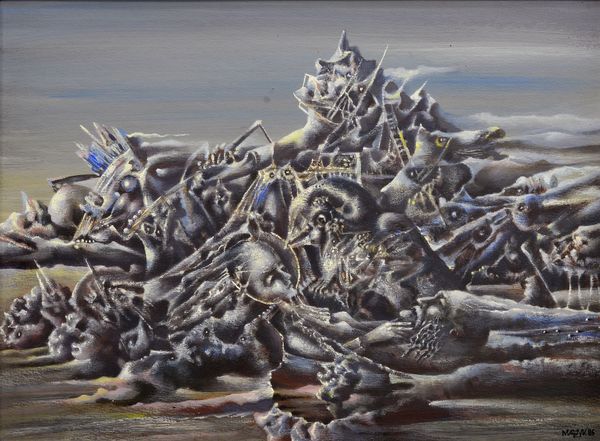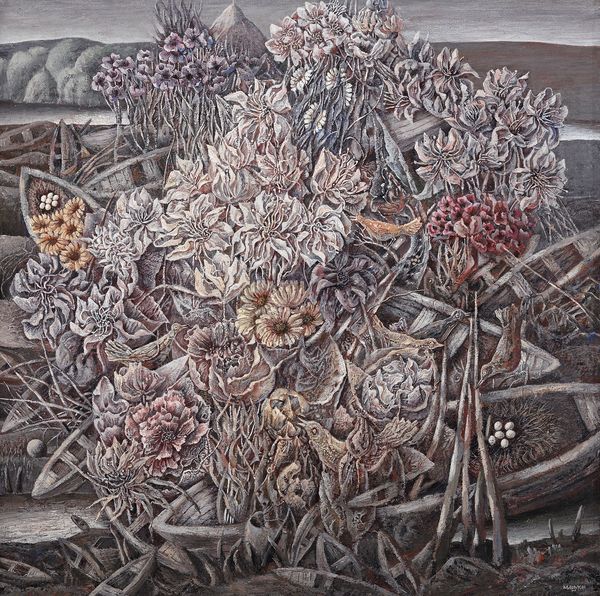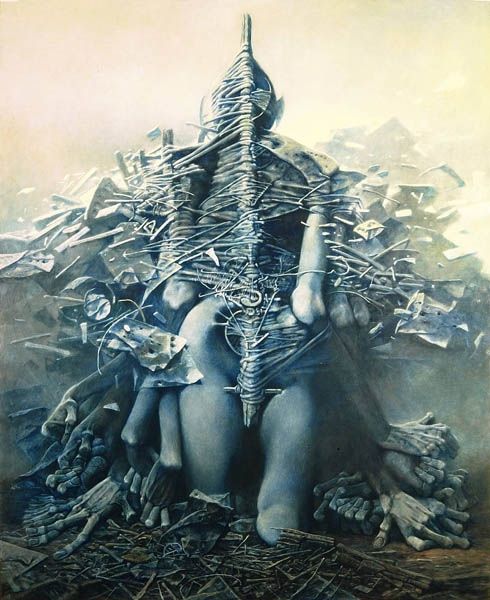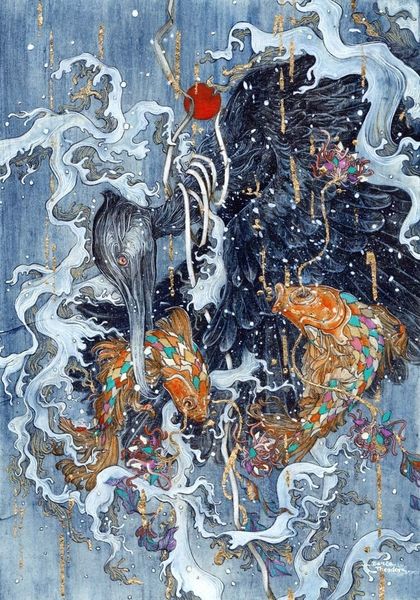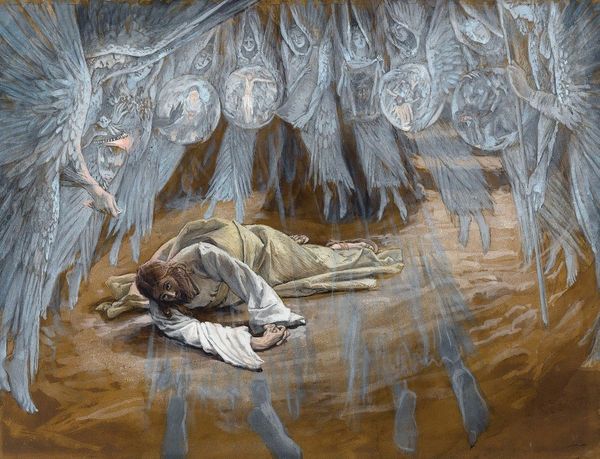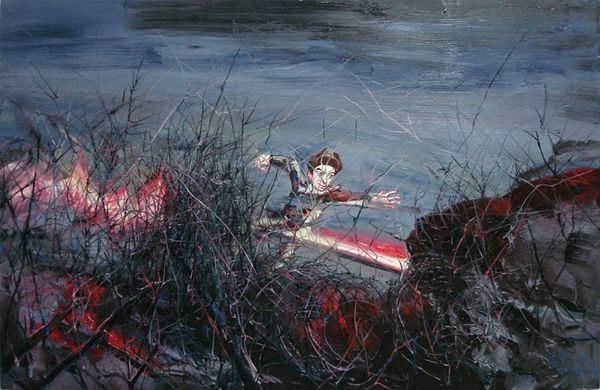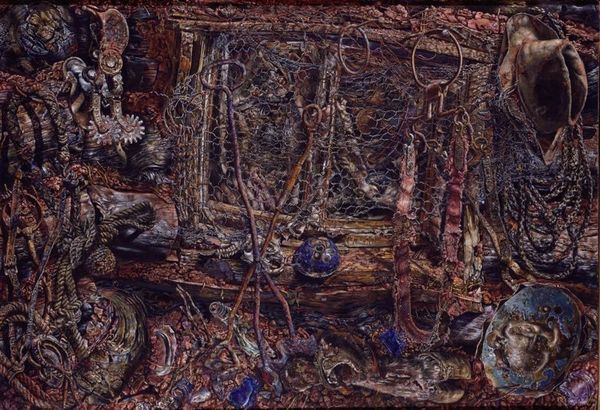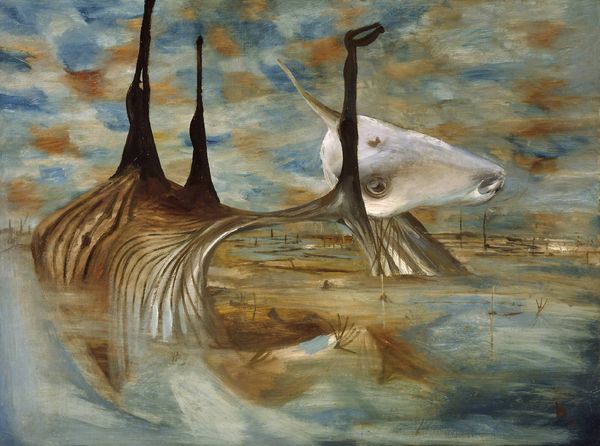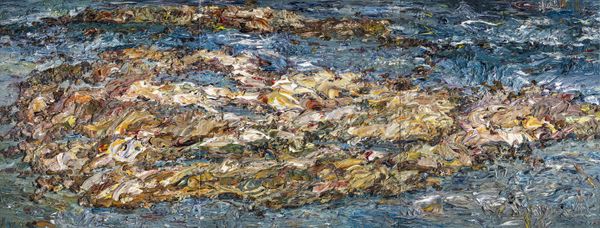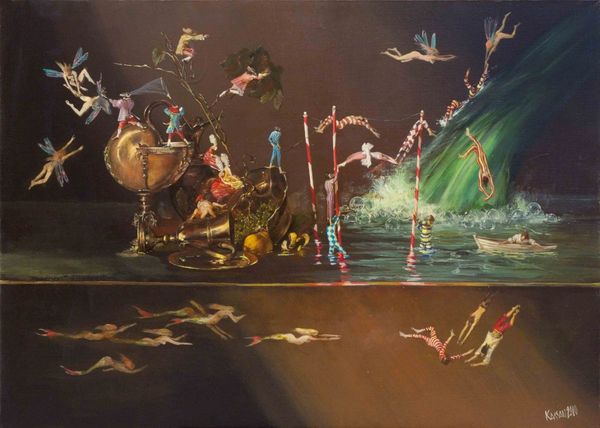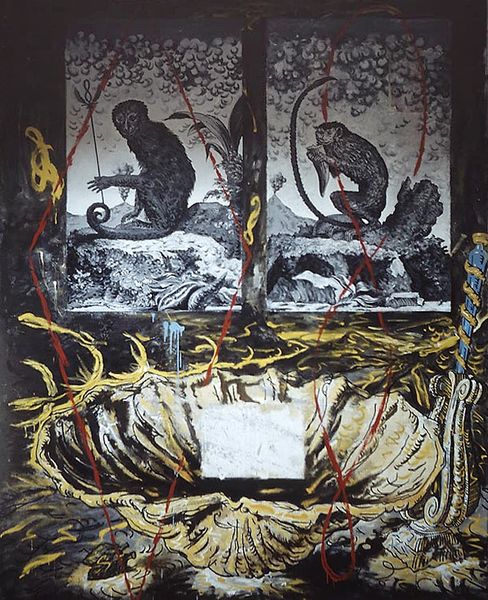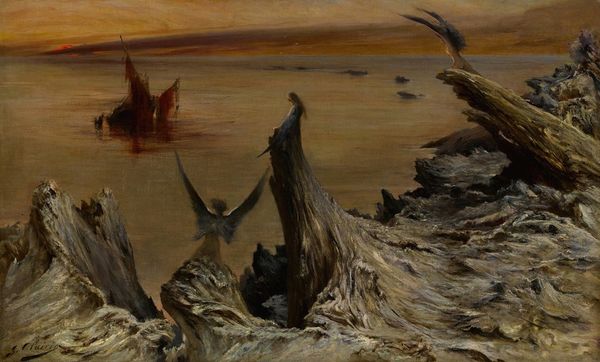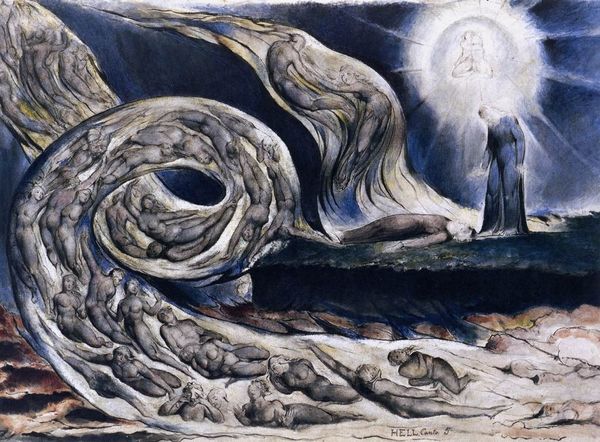
Copyright: Ivan Marchuk,Fair Use
Curator: Ivan Marchuk created this piece, titled "Fly Butterfly", in 1986 using oil paint. At first glance, what are your thoughts? Editor: The density is immediately striking; there’s an overwhelming layering of detail. It feels… oppressive, almost claustrophobic, despite the implied landscape. Is that the intended impact? Curator: It is an emotional and complex response reflective of Marchuk's own socio-political context during that time. This piece was painted in Soviet Ukraine, where free expression was significantly curtailed. So what may read to us now as just detailed could be interpreted as a manifestation of constrained creativity, of repressed emotion seeking an outlet through intricate, almost obsessive detail. The figure, for example, emerging from this woven landscape seems weighted by that environment. Editor: That reading is powerful. Looking closer, I am fixated by the application of the oil paint, though—the texture seems almost woven, recalling tapestries or even very fine lacework. There's a sense of painstaking labor here. The medium is critical to conveying Marchuk's response; imagine a different application style. Curator: Indeed. That’s also central to Marchuk's style, which he termed "Plyontanism". It involved layering thin brushstrokes to build up an almost three-dimensional surface, achieving the dense texture we're discussing. His methodology allows him to express so many entangled feelings about freedom, about being buried in one’s circumstances and dreaming of flying beyond them, towards hope—symbolized by that tiny butterfly on the figure’s outstretched hand. Editor: That small, bright spot becomes so significant given its physical place atop the detailed composition. Curator: Absolutely, its fragile, fleeting nature sharply juxtaposes against the grounded, muted tones underneath. In Marchuk's biography, he faced censorship and repression, which certainly impacted the symbolic meaning in his artwork. He transformed obstacles into tangible creative assets. The layering is a symbolic resistance. Editor: Thinking about art making, it does shift the work's perspective for me. Curator: Indeed. Marchuk was really pushing the limits of art. This work acts as a testament to resilience and creative defiance. Editor: It's a compelling reminder of how intertwined art, production, and social conditions truly are. I appreciate your drawing attention to those layers within the piece and its history. Curator: And thank you, by noticing and calling attention to Marchuk's oil painting process and craft. It reminds us of how it enables powerful meaning.
Comments
No comments
Be the first to comment and join the conversation on the ultimate creative platform.
